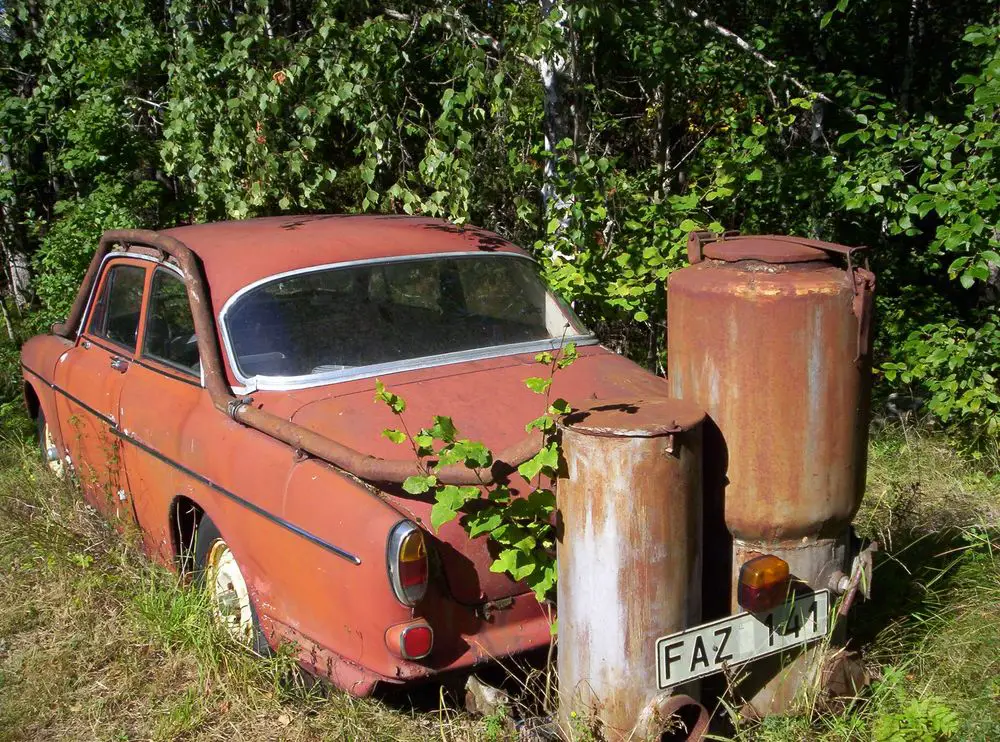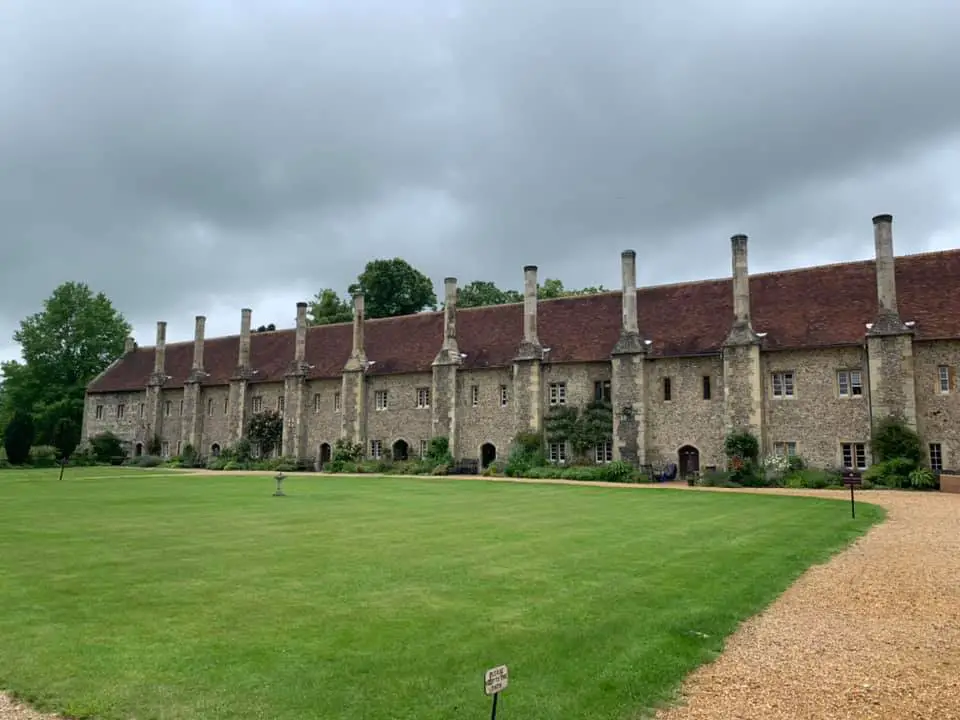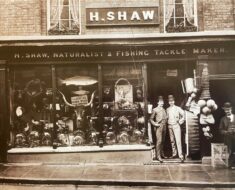Kelleks: Many years ago modern people assumed that early civilizations were bumbling cavemen with little brain power.
Even to this day, the ingenuity and inventiveness of early societies and civilizations of the Middle East continue to surprise us.
Contents
With the modern technologies now available to us, we are learning that early man was quite sophisticated. One particular discovery by historians and archaeologists shows the Mesopotamian, Assyrians, Babylonians and Sumerians all came up with the same idea.
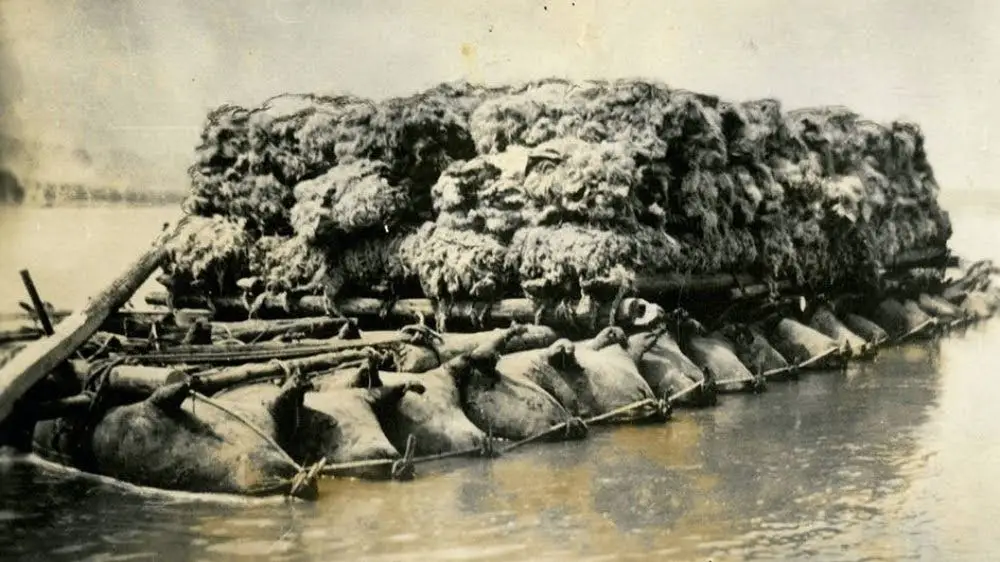
——Albert Einstein
Incredible Method
And that was inflating animal skins to either ride on the sea or tied together with a wooden frame to make a raft. Called kellek by the Assyrians, it took a special technique of skinning to make a kellek.
Once the animal was dead, the head, the feet, and the tail were removed and all of the innards, including the bones, internal organs, the muscles, the meat and the blood vessels were pulled out through the neck opening.
Three ends of the legs and the tail area were sewn tight using leather cords which shrank after they got wet, ensuring a tight seal. Then the entire cleaned out carcass of skin was put into the water for a few days and then stretched out in the sun to dry.
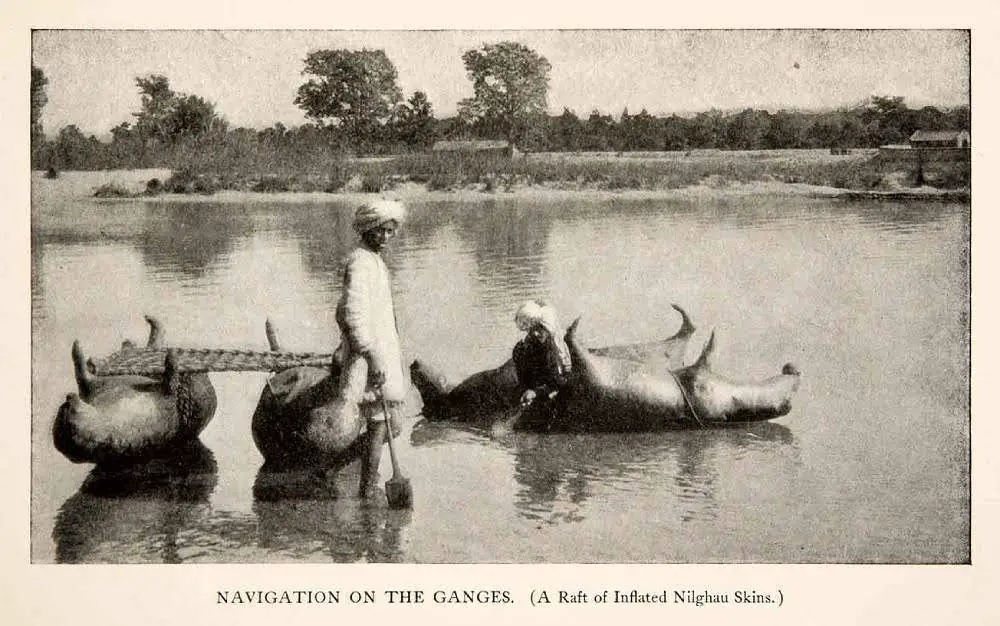
Blowing Air Inside The Remaining Leg
Once the skin was dry the hair was removed by scraping the skin until it was soft. A concoction of water, salt and vegetable oil was rubbed all over the skin and it was put out to dry again. Once it was brown it was ready to inflate.
To inflate the skin one had to use a reed straw and blow air inside the remaining leg and it was tied off with wet leather cords. If a hole was discovered a small piece of wood was placed atop the hole and tied tightly with leather cords according to aramcoexpats.com
The Scholarly Journal wrote and article in 1902 on how a kellek was made:
“In the evening a number of entire sheepskins had been well soaked and left wet so that they might be pliable and ready for immediate use. In the morning they were inflated by blowing through the necks, the legs being securely tied so that no air could escape. At first, the mouths of the blowers were at a distance of 8 or 10 inches from the necks of the skins, but as the latter became fuller and more difficult to inflate, the men’s mouths were brought nearer until they touched the skins. When a hole was discovered, it was quickly mended by putting a piece of wood like a checker against the inside of the hole and tying the skin firmly around it. A light frame of saplings was tied together with ropes, and under this were tied the skins, about thirty in number, with the legs up. They were packed together so closely as to make the kellek water-tight. Thirty skins seemed to us very few for five people, but the fishermen’s rafts consist of only six, and two men sit on one such kellek. The kelleks always go in pairs on long fishing trips. … As soon as we began to float, we concluded that a kellek moves in the easiest, most delightful way that can be imagined. There is no jar or shake. The buoyant skins and pliant saplings adapt themselves to every movement of the waves. Half an hour after starting, we stopped for some time while the kellekjis gathered a great quantity of reeds, which they spread over the raft, partly to protect the skins from injury by our feet, but still more to prevent them from drying in the hot sun and cracking. Every hour or two they threw water over all exposed portions of the skins.”
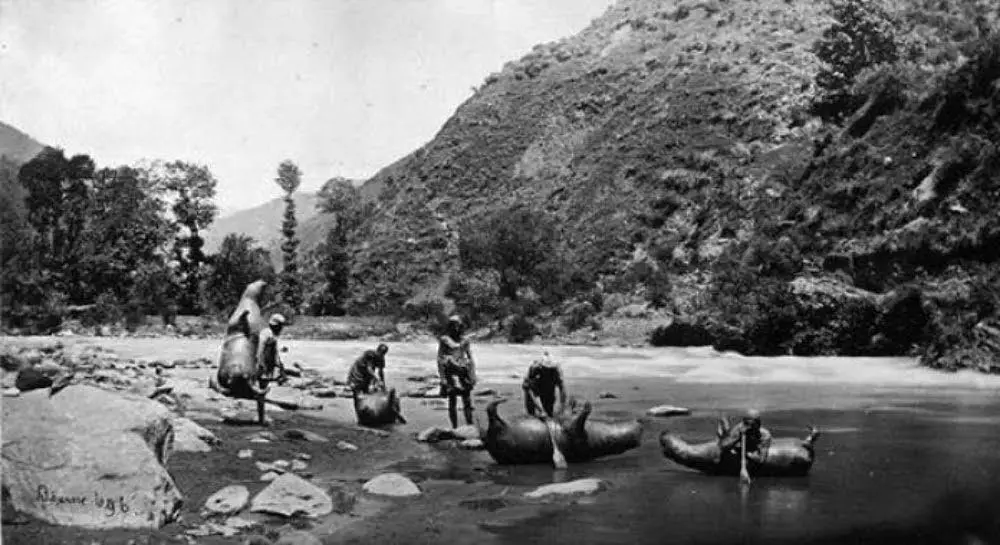
Goats, Pigs, Bears
All types of animals were used for their skins. Goats, pigs, bears, sheep, and oxen just to name a few. They were not always used as personal flotation devices.
They were frequently used to float rafts and boats and according to iro.umontreal.ca, did so until the mid 1900s on the Tigris and Euphrates rivers. They ferried people, goods, and stone for building and decorating.
James Ricalton, who was an American travelled the world as an explorer and adventurer wrote about what he witnessed:
This is some twenty miles from Naldera, up in the hill country of the Punjab. The mountain river here is deep and swift; you can see ahead how high, steep banks wall it in and you can judge how pouring rains, draining from such slopes, would turn this stream into a fiercely raging torrent.
These men are natives in their customary clothes, and the rather ghastly looking objects with which they are busy are the hides of cattle, sewed up tightly and inflated with air till they can be used like enormous life-preservers. Two of the men you notice, are still at work blowing their “boats” full of air; they have cords there all ready to tie up the end of the skin when it is sufficiently distended.
Another has done the blowing-up at home and is bringing his skin down over the rocky bank; it is bulky but naturally very light and comparatively easy to handle.
When they are ready to start each man will throw himself across one of the inflated skins, using his foot on one side and a short paddle on the other side to propel the queer craft. If his balance is not perfect of course the craft rolls over and he gets a ducking, but practice makes skilful, and, as a matter of fact, small loads of freight and even passengers are ferried across in safety. If several passengers are to be taken over, it is customary for two “boats” to start out side by side, the passengers on the different floats taking hold of each other to help balance the queer craft.
India Through the Stereoscope: A Journey Through Hindustan
Other Organs
For smaller jobs the bladders of larger animals were sometimes used. There was one report that animal skins were often used to sleep on. Filled with water, it may have been the first waterbed known to man.
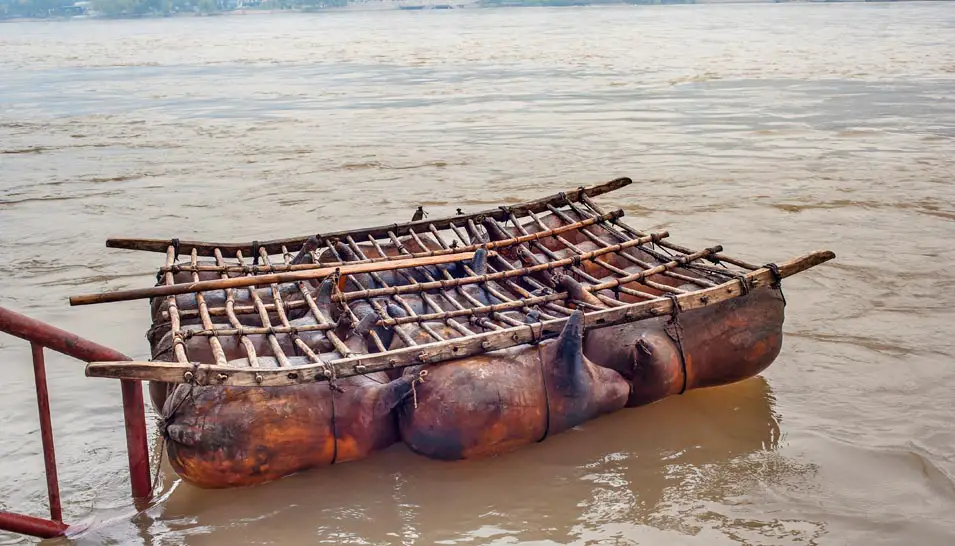
Examples of using animal skins for flotation are found in the British Museum on a bas relief of ancient Assyrians from Nimrud using them to aid in swimming.
A painting in the Victoria and Albert Museum depicts a kellek ferrying a large statue of a winged bull, Lamassu, excavated by British archaeologist Sir Austin Henry Layard from Mosul in Northern Iraq down the Tigris river to Basra in southeastern Iraq.
In about three hundred B.C. Alexander the great used kelleck to transport fifteen hundred cavalry soldiers, their horses and four thousand infantry men across the Danube as shown on Trajan’s column in Rome depicting Romans crossing the river on floating bridges made possible with animal skins.
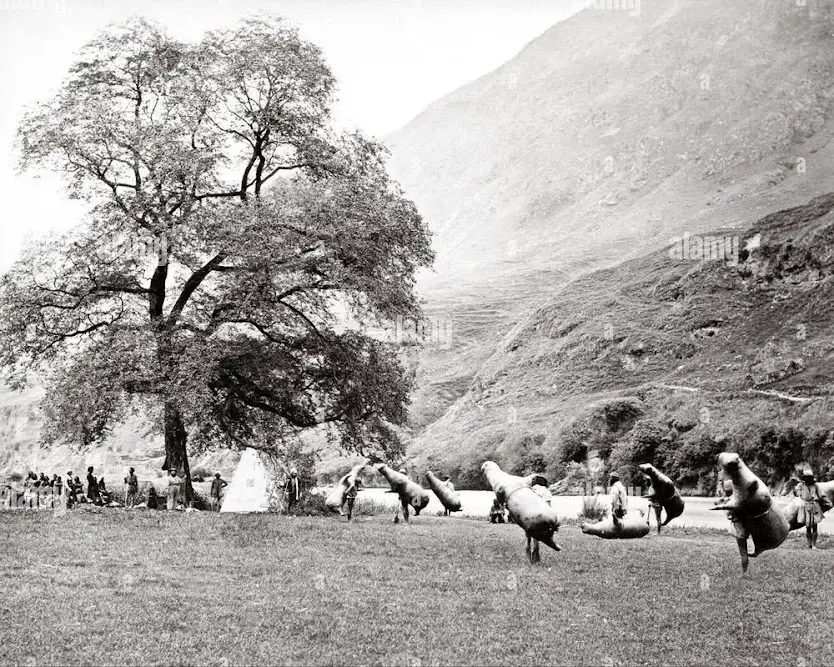
Archeologist Gertrude Bell was working in the Middle East before WW1. She wrote about using kellecks to cross the Tigris.
In her notes found at Newcastle University she remarked, “We crossed in a craft called a kellek, 19 inflated skins tied together and floored over with reeds. It looked very frail in those swift waters but it served our purpose and in 4 journeys took us and our loads over”.
If you like this article, then please follow us on Facebook and Instagram
Another Article From Us: Prehistoric Tunnels Dug by Giant Ground Sloths
Genghis Kahn always carried kelleks during his western marches of conquest. And, Kublai Kahn kept some with his troops to facilitate river crossings.
The skins were easily stored when dry. When they are needed they are soaked in water again until they are soft and able to be inflated.

